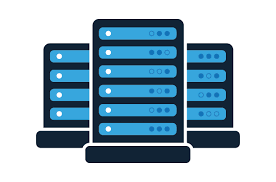Data centers in Noida form the backbone of modern information technology, powering our digital world. Effective data center management ensures optimal performance, reliability, and cost-efficiency. This post explores the best practices and tools that can help streamline data center operations, enhance resource utilization, and maintain a competitive edge in a rapidly evolving tech landscape.
Best Practices for Data Center Management:
Let’s look at the top seven best practices for managing data centers in India.
1. Efficient Space Utilization
The practices include:
- Plan Data Center Layout: Strategically design the layout of the data center in India to make the most available space. Consider factors like rack placement, aisle configurations, and equipment arrangement for optimal airflow and accessibility.
- Aisle Containment: Implement hot and cold aisle containment systems. It involves isolating hot and cold airflows to prevent mixing, ensuring efficient cooling, and reducing energy consumption.
- Rack and Server Placement: Organize racks and servers to minimize gaps and maximize density. It reduces unused space and facilitates better airflow management.
2. Effective Cooling Solutions
The practices include:
- Advanced Cooling Technologies: Explore innovative cooling methods, such as liquid cooling or direct-to-chip solutions, to dissipate heat more effectively and efficiently than traditional air cooling.
- Temperature and Humidity Monitoring: Use sensors to constantly monitor humidity and temperature levels within the data center in Noida. It enables the timely detection of anomalies that could lead to equipment overheating or failure.
- Computational Fluid Dynamics (CFD): Employ CFD simulations to model and optimize airflow patterns. It helps identify areas with poor ventilation and allows for adjustments in layout or cooling systems.
3. Power Management
The practices include:
Power Monitoring Tools: Deploy power monitoring solutions to track energy consumption and calculate Power Usage Effectiveness (PUE). These tools help pinpoint areas where energy efficiency improvements can be made.
Energy-Efficient Hardware: Choose energy-efficient servers, storage devices, and networking equipment designed to consume less power without compromising performance.
Virtualization and Consolidation: Utilize virtualization technologies to operate numerous virtual machines on a single physical server. Server consolidation reduces the number of physical machines, leading to lower power consumption.
1. Remote Monitoring and Management
The practices include:
- Remote Monitoring Tools: Implement remote monitoring systems that provide real-time insights into performance metrics, temperature levels, and energy usage. It allows IT teams to react promptly to any issues.
- Remote Management Capabilities: Invest in tools that enable remote management of servers and network devices. It includes capabilities like remote console access, power cycling, and firmware updates, reducing the need for on-site intervention.
2. Regular Maintenance
The practices include:
- Preventive Maintenance Schedule: Develop a well-defined schedule for inspecting, cleaning, and servicing equipment. Regular maintenance prevents unexpected breakdowns and extends the lifespan of the hardware.
- Spare Parts Availability: Maintain a stock of spare parts and components, such as power supplies and hard drives, to quickly replace failed parts and minimize downtime in emergencies.
3. Security and Compliance
The practices include
- Physical Security Measures: Implement multi-layered physical security measures, including access controls, surveillance cameras, and biometric authentication, to safeguard the data center environment.
- Regulatory Adherence: Stay updated with industry regulations and data security and privacy standards, such as ISO 27001 or NIST guidelines. Complying with these standards ensures data protection and legal compliance.
4. Documentation and Labeling
The practices include:
- Comprehensive Documentation: Maintain detailed records of hardware configurations, network diagrams, and maintenance activities. This documentation aids in troubleshooting, capacity planning, and future expansions.
- Clear Labeling: Use consistent and clear labeling for racks, cables, and equipment. Proper labeling simplifies cable management and reduces the time to identify and resolve issues.
Essential Tools for Data Center Management
The essential tools for the management of data centers in India are:
1. Data Center Infrastructure Management (DCIM) Software
This tool comprises of:
- Comprehensive Insight: DCIM software provides a holistic view of the data center in Noida’s physical layout, assets, and utilization. It helps visualize space, power, and cooling distribution for informed decision-making.
- Resource Allocation: With real-time monitoring, DCIM tools assist in optimizing resource allocation by identifying underutilized or overutilized areas.
2. Environmental Monitoring Systems
This tool comprises of:
- Early Warning System: Environmental monitoring systems use sensors to track temperature, humidity, and other variables. Alerts are generated if conditions deviate from the optimal range, preventing potential equipment failures due to overheating.
3. Remote Hands Tools
This tool comprises of:
- Remote Troubleshooting: Remote hands tools enable IT teams to perform troubleshooting tasks, such as system reboots or cable adjustments, without physically being present in the data center in India. It reduces response times and minimizes operational disruptions.
4. Power Monitoring and Management Tools
This tool comprises of:
- Energy Efficiency Optimization: These tools monitor power consumption at various levels, helping identify energy-intensive components or areas. They enable efficient power distribution and contribute to cost savings.
5. Configuration Management Tools
Automated Configuration: Configuration management tools automate deploying, updating, and managing software configurations across servers. It ensures consistency, reduces human errors, and enhances security.
6. Security and Access Management Tools
This tool comprises of:
- Access Control Solutions: Security tools provide access controls through biometric authentication, access logs, and user management systems. They prevent unauthorized access and ensure a secure environment.
Asset Tracking and Inventory Tools
This tool comprises of:
Asset Lifecycle Management: Asset tracking tools maintain records of hardware assets from procurement to disposal. It aids in tracking warranty status and maintenance schedules and optimizing hardware refresh cycles.
Bottom Line
Mastering the art of data centers in Noida management requires implementing and adhering to these best practices while leveraging the right tools. By optimizing space, cooling, power, security, and documentation, organizations can create efficient and resilient data center environments that support the demands of modern technology while ensuring cost-effectiveness and sustainable operations.




Leave a Reply